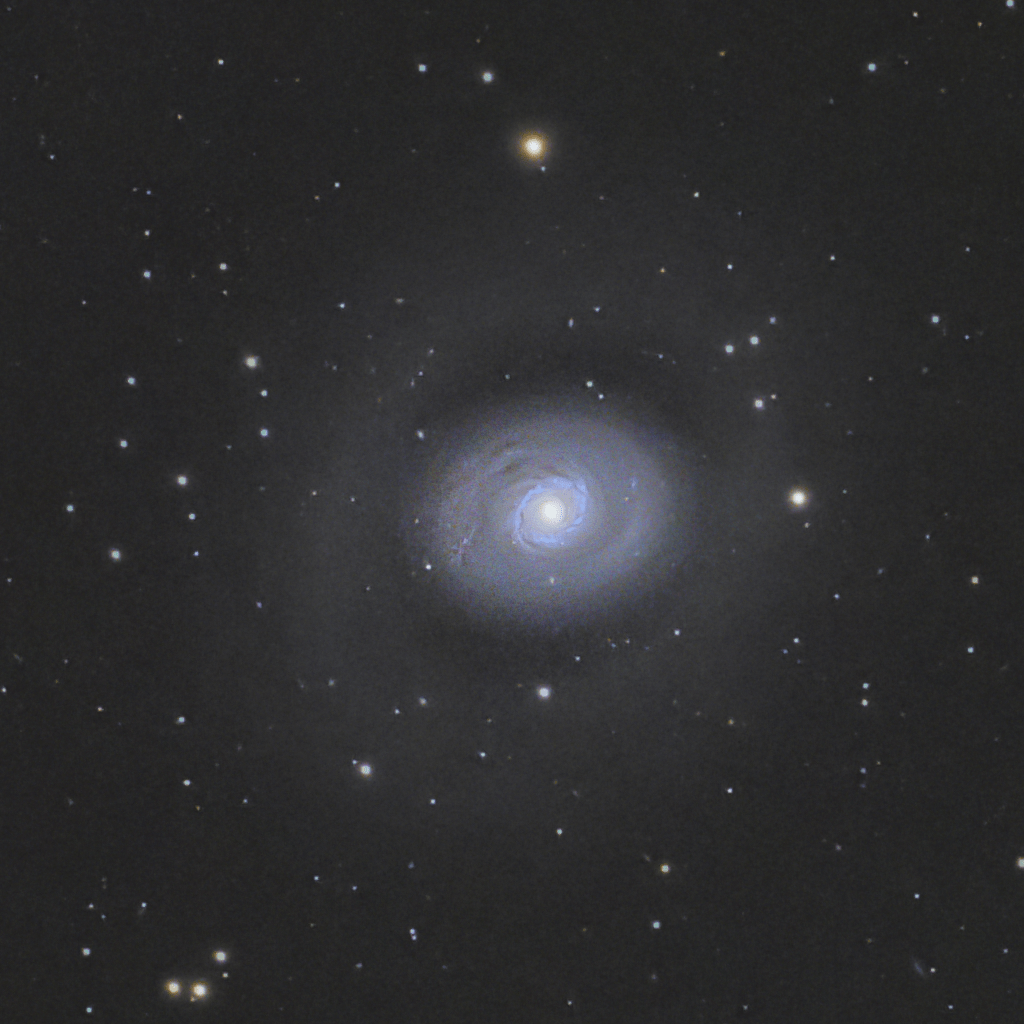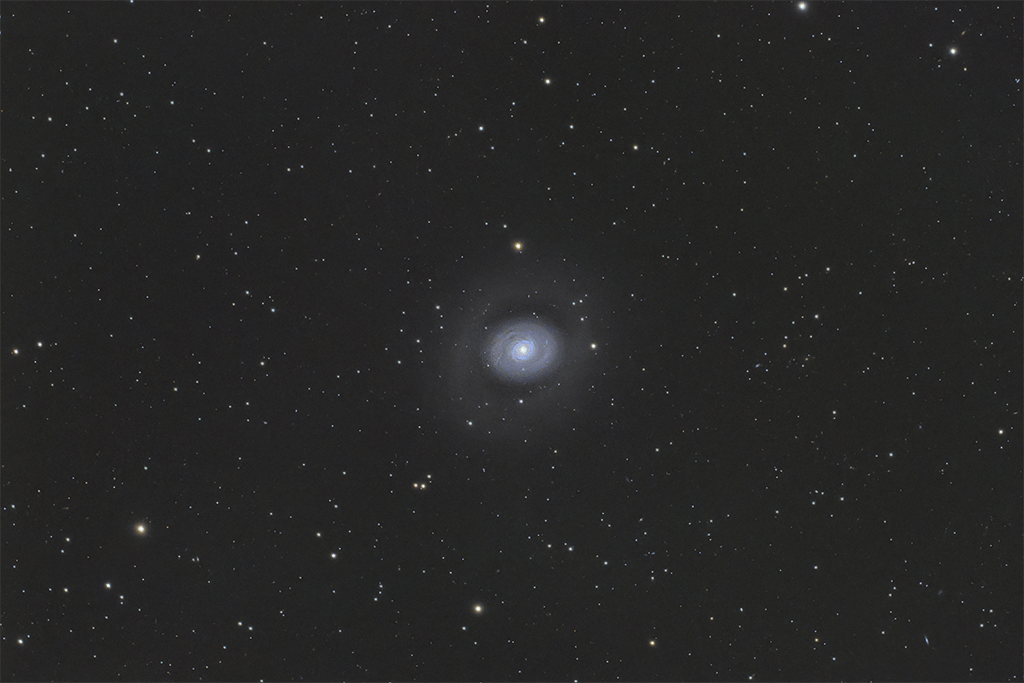Messier 94 (M94), sometimes called the ‘Croc’s Eye’, is a spiral galaxy in the constellation of Canes Venatici. At first look, it seems to have two ring structures; however, since 2009, after observation in IR and UV, the outer ring has been recognised as having a complex spiral arm structure. Although my image does not show the full complexity, there are hints of its spiral nature, particularly towards the bottom left of the image, where a faint arm spirals outwards clockwise. The inner ring is very bright with a ring of new stars formed around the nucleus. It is a site of starbust activity, which basically means that new stars are forming here very quickly.
Hera image processing
Image processing is absolutely essential for astrophotography. After capturing the raw data using the equipment detailed below, this image was mostly processed in my own astrophotography processing software, Hera. Finishing touches were made in Photoshop and Topaz DeNoise AI (I love what Topaz can do for sharpening and noise reduction.) I will post a video demonstration of how I processed this image and some other ones soon.
I have been hard at work improving Hera and adding new processing tools since my last post. It’s a personal project of mine, which I spend a few hours on per week coding, and many more hours per week learning about image processing techniques and algorithms by reading the scientific literature.
New processing tools
- À trous wavelet transform processing for sharpening and noise reduction. This tool is surgical!
- Non-local means denoising for powerful luminance and chroma denoising. This tool is very effective at noise reduction (although rather slow compared to some other algorithms).
- Iterative masked histogram transformation for ‘stretching’ images to ‘draw out’ faint details, making dark regions lighter while not ‘blowing out’ bright regions. This is a powerful tool for galaxies which often have a bright nucleus surrounded by faint dusty lanes that can easily be blown out during stretching.
And of course, this is all in addition to the previously existing tools: Background neutralization, Color calibration, Gradient removal, Histogram transformation, and various essential image handling tools like opening input images, saving, cropping, color space conversion, etc.
New features
- Fully parallel calculations for faster processing. This includes offloading some tasks like histogram generation to parallel threads (so the interface doesn’t lock up during the calculation).
- Preview stretch (some might call it a ‘screen transfer function’) to allow you to preview the stretched image while still processing it as linear.
- Auto-recalculate. If, for example, you change a parameter in step 1, you can set it to automatically propagate through recalculating the whole sequence of steps. It is now very easy to see the sensitivity of the final image to early parameter choices.
- Auto sample placement button added to the gradient removal tool. This works really well.
- Re-implementing various OpenCV library functions which are not 32-bit compatible.
- Enhanced mousewheel, trackpad and scrolling control. (Believe me, not easy—different hardware drivers trigger different events. I think I’ve now got something general that will work well across all input devices.)
- Detailed documentation of how each tool works, and guidance for their usage. I’m actually enjoying this. It’s a relief not to have to store it in my memory by writing it down somewhere.
Next steps
- Dedicated masking (not just the masking that I’ve built into some tools as part of their standard operation)
- Star reduction
- Licensing
- Release version 1.0.0
- Continue implementing other tools for future versions.
Image details
Frames
- 64× 150-s light frames (Gain 900) from 81 overall (best 80%)
- 2 h 40 min total integrated exposure time from 3 h 23 min overall (best 80%)
- Full use of calibration frames (darks, flats, dark flats)
- It was a very HAZY night
Equipment
- Explore Scientific ED 102 mm Apo f/7 refractor
- Revelation Adjustable Field Flattener
- Sky-Watcher EQ6-R PRO SynScan GOTO equatorial mount
- Altair Hypercam 294C PRO colour fan-cooled camera
- Pegasus FocusCube v2
- Altair 60mm guide scope
- Altair GPCAM2 AR0130 mono guide camera
- Hystou Rugged Fanless Mini PC i5 7260U
Software
- SharpCap 4.0
- PHD2
- DeepSkyStacker
- Hera 0.2.0
- Photoshop
- Topaz DeNoise AI



